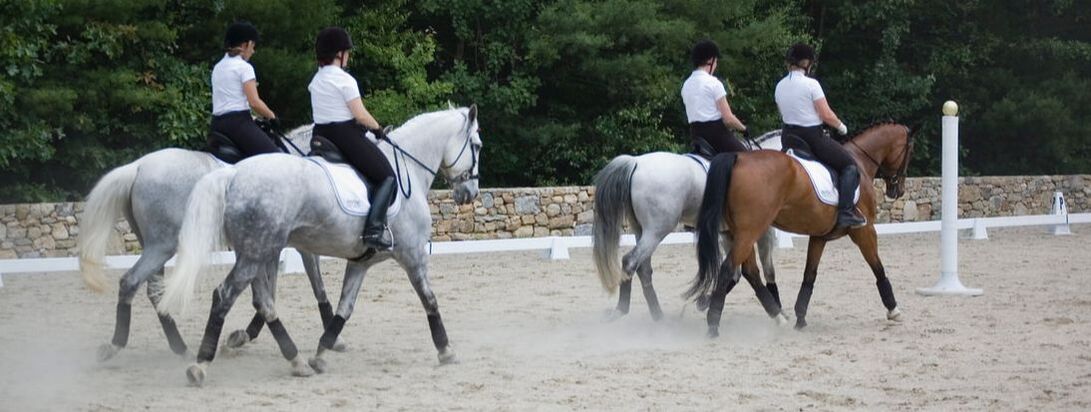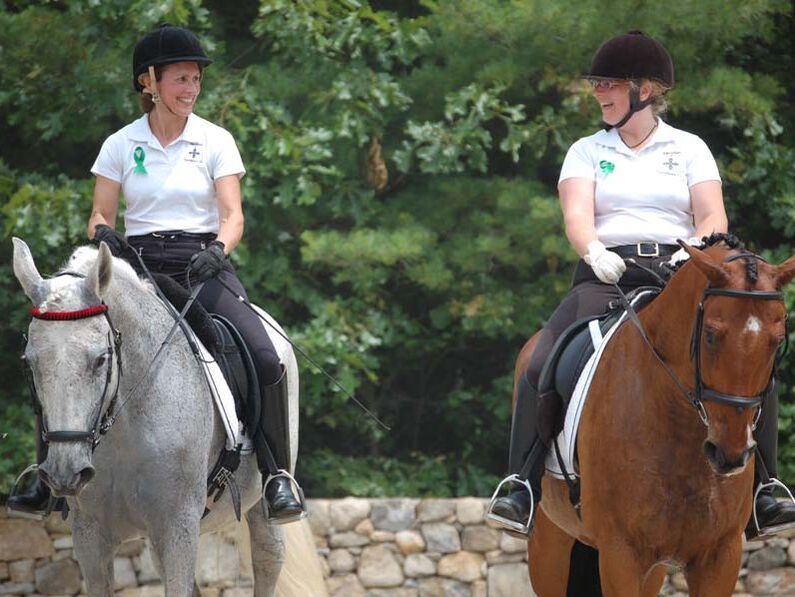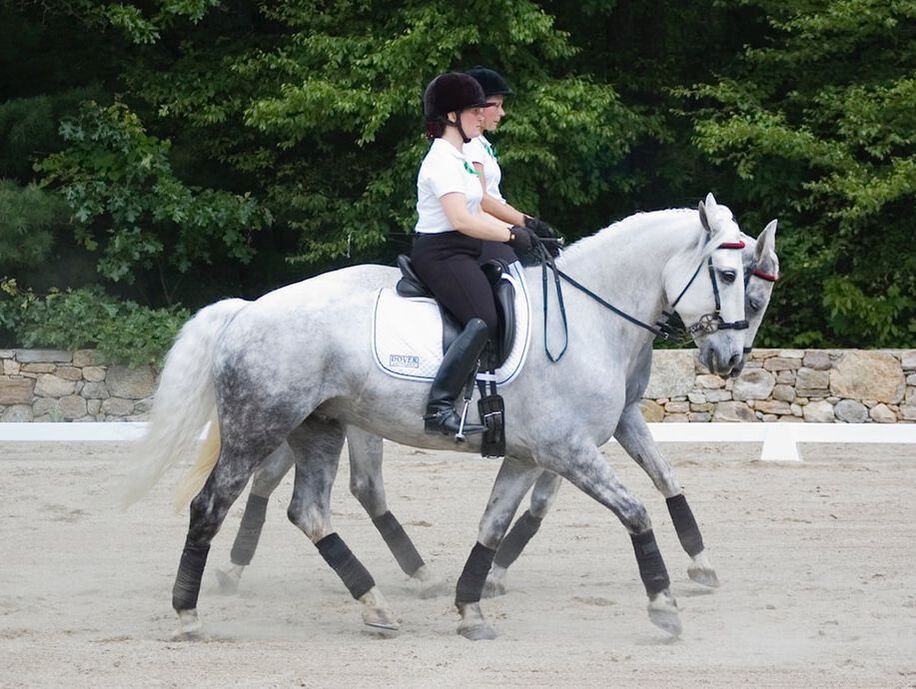|
Quadrille was originally performed during the Baroque period. Based on military maneuvers, it was used to demonstrate to the aristocracy that the riders defending their country were competent and thorough in their warfare skills and deserved their funding. Soldiers exhibited at functions regularly. Quadrille riding was also used as a way to train exercises in formation using classical dressage principles. |
Want to get involved with Quadrille? Join a team or start your own?
Contact Sara Macaulay: email: [email protected] phone: 978-239-2862
Sara shares her story of Quadrille beginning with her introduction to it as Susanne's student.
|
"I am a lifelong rider who started out as a hunter then became a low level eventer before finally landing in dressage as my primary riding discipline. Without question, the very best thing about dressage for me is that it opened up the world of musical freestyle, pas de deux and quadrille. Working and riding synchronized patterns to music as a team is about the most fun one can have on a horse! Sue introduced me to quadrille, and I will be forever grateful to her for introducing me to what has become one of my life's passions."
"In 2006 I coached a pair of pony clubbers who went to USPC National Championships for dressage and won the musical freestyle competition with their pas de deux. The following year Sue invited me to join Meridian Equidance and I began riding on her quadrille team and choreographing the rides. We performed in New England as featured riders at a wide range of events such as fundraisers at Bear Spot and Apple Knoll, the Monadnock Music Festival, a NEDA freestyle clinic and the halftime entertainment for a celebrity polo match. We also competed at schooling and sanctioned shows. Although Meridian Equidance has disbanded I've continued working with a group of riders in NH at Sea Star Barn. |
"Dressage is a discipline that focuses on and uses patterns and figures as a means of training. I am an artist and art teacher for my day job. Around the time I became interested in dressage in my riding, I started to imagine how my rides of patterns and figures would look from above and how the energy of the horse and rider might translate into colors. I painted these visions. From my dressage paintings, it was a short jump to doing the actual choreography of dances for horses and riders. I think about the rides as patterns, shapes and forms in space. I draw the patterns out on paper and see how they fit together, and then I put it all to music."





